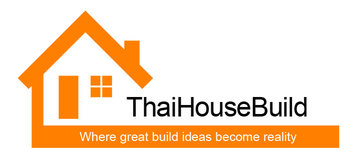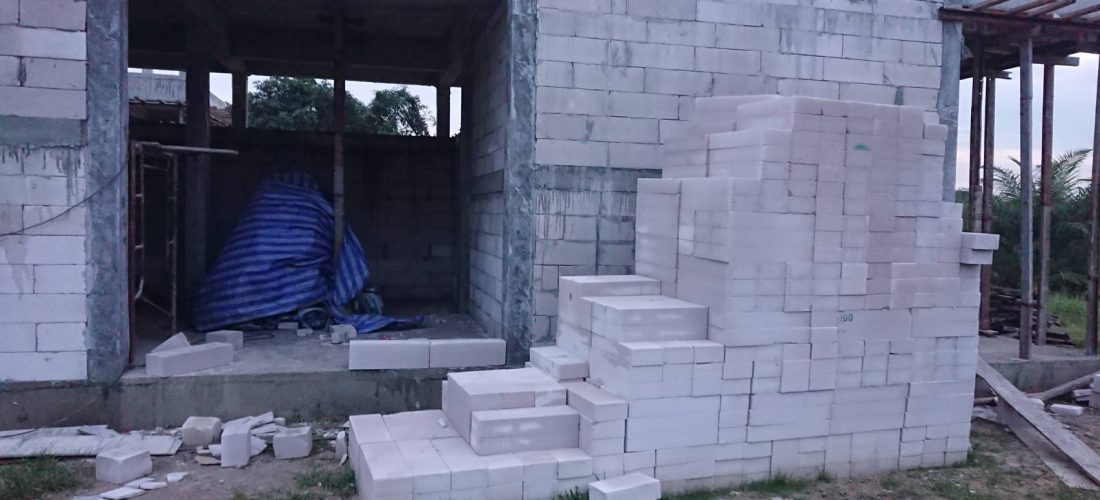AAC Blocks …
Autoclaved Aerated Concrete Blocks. AAC Blocks
Why did we go for this type of block instead of the more traditional standard concrete block? The standard concrete block would have been cheaper, making a big saving, on the face of it, for the project walling costs. The construction process is basically the same, so what’s the advantage?
Well… AAC blocks have increased thermal insulation properties. They keep the heat out, and the cool, in. In Thailand, where heat build-up is a relentless factor, this is important. By using AAC blocks, we could keep the home cool without over-reliance on Air-conditioning – a big saving over time.
Next, they are lighter than that standard concrete block. Therefore, they can be lifted and passed about very easily, so which makes construction using the AAC block much safer, avoiding back, arm and contact injuries


The AAC block is easier to work with. They can be cut with a saw, so shaping an AAC block is very straightforward.
Now to the costs. Yes, the AAC block is more expensive BUT… it is larger, so you need fewer blocks. If you factor in the price negotiations and discounts for a truckload of blocks, the cost difference is actually negligible.
Now, any downsides? Yes, there is one that needs to be considered, but it is solvable. Once the wall is built and finished…how does one attach anything to it? The construction of the AAC block means that if you attach anything to it with weight, it might pull out of the wall. You get around this by using the AAC wall fastenings which will allow, say, kitchen units to be safely mounted to the wall.
So with the advantages that this type of block offers, the question should really be… why would you not use AAC Blocks!?

